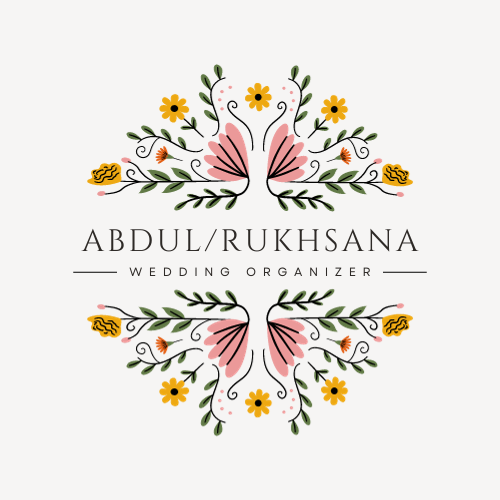
Islamic Wedding Attire
Islamic wedding attire is characterized by its modesty and adherence to Islamic guidelines regarding dress code. The attire for both the bride and groom is selected with careful consideration of religious and cultural customs.
Here’s a description of the complete process for finding and selecting appropriate wedding attire for an Islamic wedding:
Research and Preferences:
The process typically begins with the couple deciding on their preferences and style for their wedding attire. They may choose to wear traditional Islamic wedding attire, such as a hijab and jilbab for the bride or a thobe for the groom, or they may opt for more contemporary and culturally influenced outfits.
Consultation:
Many couples seek the advice of elders, religious scholars, or fashion consultants who have expertise in Islamic wedding attire. These experts can provide guidance on selecting attire that aligns with Islamic principles and cultural norms.
Cultural and Regional Considerations:
Islamic wedding attire can vary significantly based on the cultural and regional context. For example, in South Asia, brides may wear intricate lehengas, while in the Middle East, brides often opt for elegant kaftans. Understanding these cultural variations is important when selecting attire.
Modesty Guidelines:
Modesty is a key consideration when choosing wedding attire. Islamic guidelines for modesty often include covering the body in loose-fitting clothing, concealing the hair for women (if they choose to wear a hijab or head covering), and ensuring that clothing is not transparent or revealing.
Fabrics and Embellishments:
The choice of fabric and embellishments is important. Fabrics like silk, satin, and chiffon are common for wedding attire, but they should be of high quality and not too sheer. Avoiding excessive embellishments or adornments that may draw undue attention is also important.
Bridal Gown (For the Bride):
Brides may choose to wear a bridal gown that is in line with Islamic principles of modesty. These gowns are typically long, flowing dresses with full sleeves and a high neckline. Veils and head coverings are often paired with the gown, depending on the bride’s preference and cultural customs.
Groom’s Attire:
Grooms typically wear a thobe, sherwani, or a suit, depending on their cultural background and personal choice. These outfits should be well-tailored, clean, and adhere to modesty guidelines. A head covering, such as a kufi (prayer cap), is often worn.
Custom Tailoring:
Many couples choose to have their wedding attire custom-tailored to ensure a perfect fit. Experienced tailors can create clothing that is both modest and stylish.
Color Choices:
Color symbolism can vary across cultures. While white is often associated with purity and is a common choice, other colors may hold cultural significance. Couples may select colors that are meaningful to them.
Accessories:
Consideration should be given to accessories, including jewelry, shoes, and other items that complement the wedding attire while maintaining modesty.
Trial Fittings:
It’s important to have trial fittings to make any necessary adjustments and ensure that the attire fits perfectly before the wedding day.
Final Selection:
Once the attire is selected and tailored, it is essential for the couple to feel comfortable and confident in their choices, adhering to Islamic guidelines while reflecting their personal style.
Finding and selecting appropriate wedding attire for an Islamic wedding involves a blend of religious adherence, cultural significance, and personal style. It’s important to strike a balance between modesty and individual expression, ensuring that the attire is a reflection of the couple’s faith and cultural identity.
